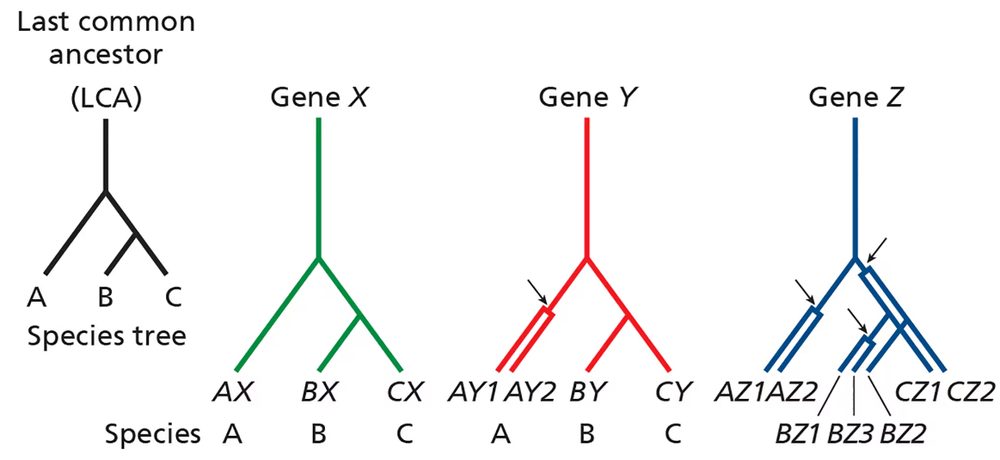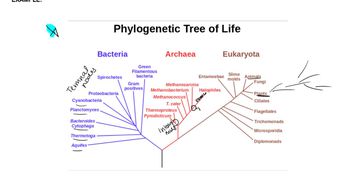You have cloned the mouse ortholog of the gene associated with human Huntington disease (HD) and wish to examine its expression in mice. Outline the approaches you might take to examine the temporal and spatial expression pattern at the cellular level.
Table of contents
- 1. Introduction to Genetics51m
- 2. Mendel's Laws of Inheritance3h 37m
- 3. Extensions to Mendelian Inheritance2h 41m
- 4. Genetic Mapping and Linkage2h 28m
- 5. Genetics of Bacteria and Viruses1h 21m
- 6. Chromosomal Variation1h 48m
- 7. DNA and Chromosome Structure56m
- 8. DNA Replication1h 10m
- 9. Mitosis and Meiosis1h 34m
- 10. Transcription1h 0m
- 11. Translation58m
- 12. Gene Regulation in Prokaryotes1h 19m
- 13. Gene Regulation in Eukaryotes44m
- 14. Genetic Control of Development44m
- 15. Genomes and Genomics1h 50m
- 16. Transposable Elements47m
- 17. Mutation, Repair, and Recombination1h 6m
- 18. Molecular Genetic Tools19m
- 19. Cancer Genetics29m
- 20. Quantitative Genetics1h 26m
- 21. Population Genetics50m
- 22. Evolutionary Genetics29m
15. Genomes and Genomics
Comparative Genomics
Problem 16c
Textbook Question
Consider the phylogenetic trees below pertaining to three related species (A, B, and C) that share a common ancestor (last common ancestor, or LCA). The lineage leading to species A diverges before the divergence of species B and C.
For gene Z, gene duplications have occurred in all species. Define orthology and paralogy relationships for the different Z genes.

 Verified step by step guidance
Verified step by step guidance1
Understand the concepts of orthology and paralogy: Orthologous genes are genes in different species that originated from a single gene in the last common ancestor (LCA) and retain the same function. Paralogous genes, on the other hand, are genes within the same species or different species that arose from a gene duplication event and may have diverged in function.
Examine the phylogenetic tree: Identify the point where the lineage leading to species A diverges from the lineage leading to species B and C. This divergence represents the LCA of all three species.
Trace the gene duplication events: For gene Z, determine where duplications occurred in the phylogenetic tree. Gene duplications can occur before or after the divergence of species. This will help distinguish between orthologs and paralogs.
Define orthology relationships: Identify the Z genes in species B and C that share a direct evolutionary relationship with the Z gene in species A. These genes are orthologs because they originated from the same ancestral gene in the LCA.
Define paralogy relationships: Identify the Z genes within each species (A, B, and C) that arose from gene duplication events. These genes are paralogs because they are derived from duplication within the same lineage, either before or after the divergence of species.
 Verified video answer for a similar problem:
Verified video answer for a similar problem:This video solution was recommended by our tutors as helpful for the problem above
Video duration:
2mPlay a video:
Was this helpful?
Key Concepts
Here are the essential concepts you must grasp in order to answer the question correctly.
Orthology
Orthology refers to genes in different species that evolved from a common ancestral gene through speciation. These genes typically retain similar functions across species. In the context of species A, B, and C, the Z genes that are derived from the last common ancestor and are present in all three species would be considered orthologs.
Recommended video:
Guided course

Overview
Paralogy
Paralogy describes the relationship between genes that arise from duplication events within the same genome. These genes can evolve new functions over time. In the case of gene Z, if duplications occurred in species A, B, or C, the resulting Z genes would be classified as paralogs, as they originated from a single ancestral gene but diverged after duplication.
Recommended video:
Guided course

Overview
Phylogenetic Trees
Phylogenetic trees are diagrams that represent the evolutionary relationships among various species based on their genetic information. They illustrate how species diverged from common ancestors over time. In this question, the phylogenetic tree helps visualize the divergence of species A, B, and C, providing context for understanding the orthology and paralogy of gene Z.
Recommended video:
Guided course

Phylogenetic Trees
Related Videos
Related Practice
Textbook Question
319
views


